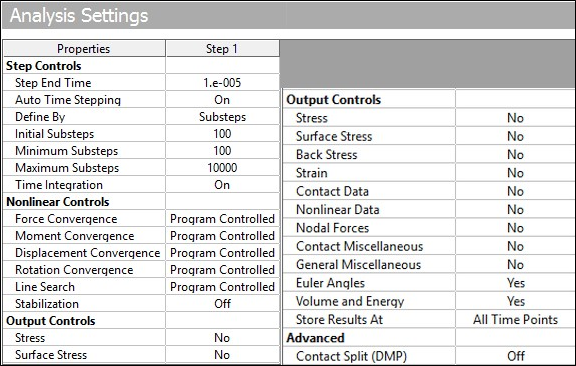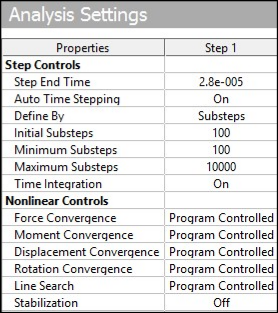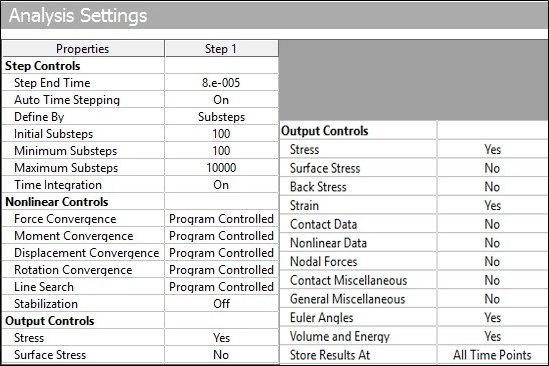Large displacement effects are included in the analysis.
For all three impact scenarios, three transient analyses are performed, using the commands listed below:
Full method with the Newmark time-integration scheme and no damping:

Full method with the Newmark time-integration scheme and damping:

Full method with the HHT time-integration scheme and damping:

The Analysis Settings used for each of the three impact scenarios are described in the following sections:
The total time (simulation time) used is slightly larger than the time needed for the bar to impact the rigid wall. The bar moving at a velocity of 227 m/s requires about 0.4405e-5 seconds to cover a 1 mm gap before impacting the rigid wall.
A minimum of 100 substeps ensures a smooth response. The maximum of 10000 substeps allows the automatic time-stepping method to cut back the time increment to satisfy the impact constraints. Because the goal in this case is to study the displacement and velocity response of the bar at some points of interest over the total time period, the nodal displacement and velocity solution data is written to the results file at every substep.

All analysis settings in this case are same as for the rigid case except for total time. The total time in this case must take into account the time that the stress wave created from the impact needs to travel back and forth through the elastic bar. The calculated time of impact is 4.405e-6 seconds and the release time is calculated analytically as 2.23e-5 seconds, so a total time of 2.8e-5 seconds is used for the elastic impact.




